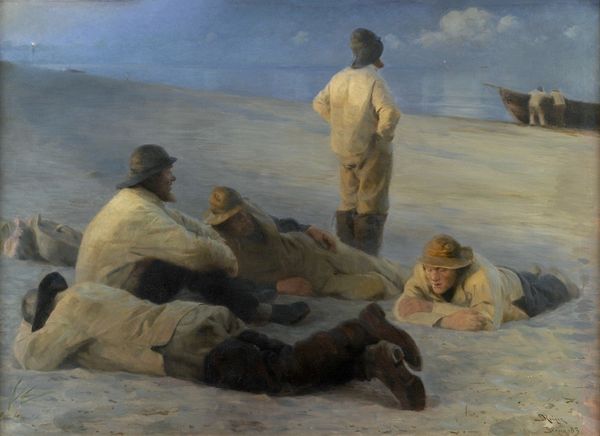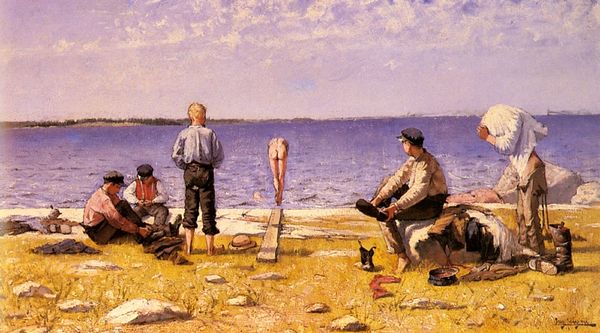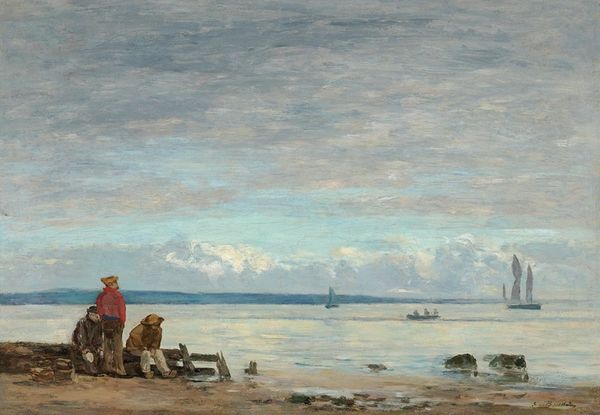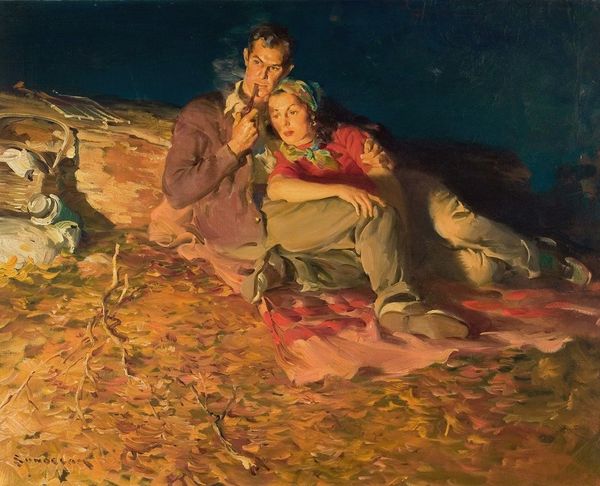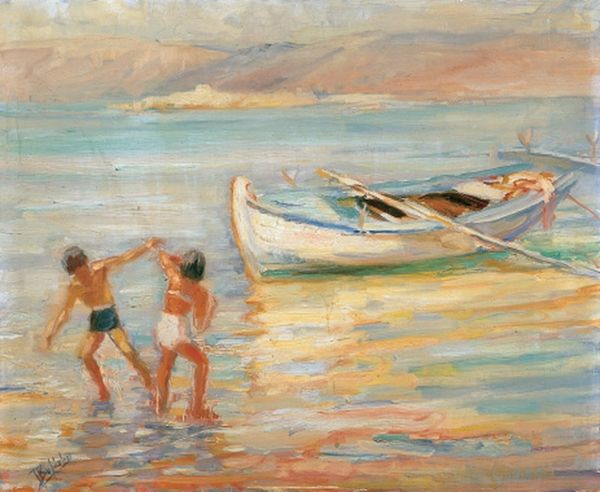
painting, watercolor
#
painting
#
impressionism
#
landscape
#
figuration
#
oil painting
#
watercolor
#
genre-painting
#
watercolor
#
realism
Copyright: Public Domain: Artvee
Curator: Winslow Homer's "Three Boys on the Shore," completed in 1873, captures a seemingly simple scene of youthful leisure. Editor: It evokes a sense of stillness, doesn’t it? The horizontal composition, the muted colors – everything seems to lull the viewer into a peaceful contemplation. The way Homer handles the watercolor is remarkable, almost translucent. Curator: Homer painted this work at a time when post-Civil War America was reckoning with new definitions of citizenship and belonging. We need to look closely at the representation of these children and the labor that they will inherit. Editor: Absolutely, the work gains so much when contextualized historically and theoretically! However, can we talk about the arrangement of the figures and their relationship to the landscape? There’s an interplay between the geometry of the rocks, the linearity of the shoreline, and the curvature of the boys’ bodies. Curator: I find the boys themselves to be of the utmost importance. Look at how their gaze is directed out to the horizon; perhaps the open water signifies both possibility and constraint, as notions of boyhood are redefined, as ideas of freedom and constraint are redefined. Their identities are being formed by social factors like gender and class. Editor: I am struck by Homer’s use of light. How the straw hats contrast with the shaded portions of their bodies, how the subtle gradations create depth without harsh lines... it's a sophisticated use of the medium. Curator: In 1873, issues of child labor were just coming to light in the U.S., though unacknowledged in the sphere of children of privilege like these boys seem to occupy. These representations must not stand alone; instead they call for investigation and further reading of contemporary society. Editor: Indeed. Seeing Homer's technique married to such poignant social commentary really changes how I see this. It is beautiful but with a lot to say. Curator: It pushes us to rethink not only the painting itself but our perceptions. The painting is a portal. Editor: And on close viewing, one might see how technique alone is not the entire story, how formalism meets the social milieu.
Comments
No comments
Be the first to comment and join the conversation on the ultimate creative platform.




